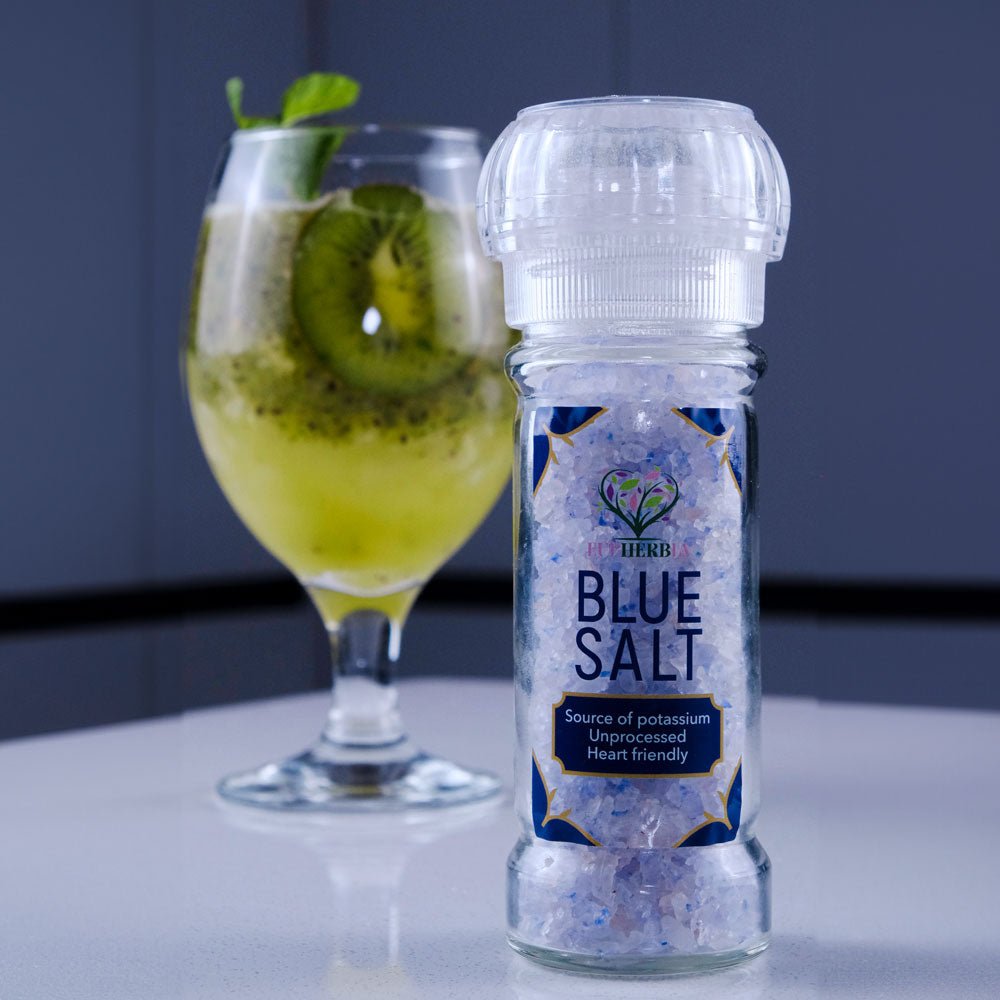Exploring Blue Salt Ingredients: A Comprehensive Guide To Understanding Its Composition And Benefits
Blue salt has become increasingly popular in recent years due to its unique properties and potential health benefits. This naturally occurring mineral-rich salt variety is capturing the attention of health enthusiasts and culinary experts alike. In this article, we will delve into the fascinating world of blue salt ingredients, uncovering what makes it special and how it differs from other types of salt.
As more people seek natural and sustainable food sources, blue salt emerges as an intriguing option. Its vibrant color and distinct taste profile set it apart from traditional table salt. Understanding its ingredients and composition can help you make informed decisions about incorporating it into your diet.
Whether you're a chef experimenting with new flavors or someone looking to enhance your wellness routine, this article will provide you with all the essential information you need about blue salt ingredients. Let's dive in and explore the science behind this remarkable culinary gem.
Table of Contents
- What is Blue Salt?
- Blue Salt Ingredients
- Benefits of Blue Salt
- How is Blue Salt Produced?
- Types of Blue Salt
- Blue Salt vs Other Salts
- Culinary Uses of Blue Salt
- Health Considerations
- Where to Buy Blue Salt
- Conclusion
What is Blue Salt?
Blue salt is a rare and exotic type of salt that derives its distinctive color from natural mineral deposits. Unlike regular table salt, which is often processed to remove impurities, blue salt retains its natural composition, making it a popular choice among health-conscious consumers. Its vibrant hue comes from trace elements like iron oxide and other naturally occurring compounds found in the environment where it is harvested.
This salt variety is primarily sourced from specific regions known for their mineral-rich waters, such as certain areas in Iran and Pakistan. The geological conditions in these locations contribute to the unique characteristics of blue salt, setting it apart from other gourmet salts on the market.
Blue Salt Ingredients
Natural Mineral Composition
The primary ingredient in blue salt is sodium chloride, the same compound found in regular table salt. However, what sets blue salt apart is its rich mineral content, which includes:
- Iron oxide
- Calcium
- Magnesium
- Potassium
- Sulfur
These minerals not only contribute to its striking blue color but also enhance its flavor profile and potential health benefits.
Trace Elements
In addition to the main minerals, blue salt contains various trace elements that are beneficial for overall health. These elements include:
- Zinc
- Selenium
- Copper
These trace elements are essential for maintaining proper bodily functions and supporting immune health.
Benefits of Blue Salt
Blue salt offers several advantages over traditional table salt due to its natural composition and mineral richness. Here are some of the key benefits:
- Rich in essential minerals that support overall health
- Lower sodium content compared to regular table salt
- Enhanced flavor profile that elevates culinary experiences
- Potential antioxidant properties due to its mineral content
Research has shown that consuming mineral-rich salts like blue salt may help balance electrolytes and support hydration, making it an excellent choice for active individuals.
How is Blue Salt Produced?
The production of blue salt involves a meticulous process that preserves its natural properties. It is typically harvested from underground salt mines or salt flats in regions with specific geological conditions. The salt is extracted using traditional methods that minimize environmental impact and ensure its purity.
Once harvested, the salt undergoes minimal processing to remove impurities while retaining its natural mineral content. This careful handling ensures that the final product retains its vibrant blue color and unique flavor.
Types of Blue Salt
Iranian Blue Salt
Iranian blue salt is one of the most well-known varieties, sourced from the Zagros Mountains in Iran. It is renowned for its deep blue color and robust flavor, making it a favorite among chefs worldwide.
Pakistani Blue Salt
Pakistani blue salt, also known as Himalayan blue salt, is harvested from the Khewra Salt Mine in Pakistan. This variety is slightly lighter in color compared to Iranian blue salt but still offers a rich mineral profile and unique taste.
Blue Salt vs Other Salts
When comparing blue salt to other types of salt, such as sea salt, pink Himalayan salt, and table salt, several differences become apparent:
- Blue salt contains a higher concentration of trace minerals than table salt.
- It offers a distinct flavor profile compared to sea salt and pink Himalayan salt.
- Its lower sodium content makes it a healthier alternative for many consumers.
While all these salts have their own unique properties, blue salt stands out due to its striking appearance and potential health benefits.
Culinary Uses of Blue Salt
Enhancing Flavor in Dishes
Chefs often use blue salt to add a sophisticated touch to their dishes. Its subtle bitterness and mineral-rich flavor complement a wide range of cuisines, from Middle Eastern to Mediterranean. Some popular applications include:
- Seasoning grilled meats and seafood
- Adding depth to soups and stews
- Finishing salads and vegetables
Decorative Uses
Due to its vibrant color, blue salt is also used as a decorative element in plating. Its striking appearance can elevate the visual appeal of any dish, making it a favorite among professional chefs and home cooks alike.
Health Considerations
While blue salt offers several potential health benefits, it is important to consume it in moderation. Excessive salt intake, regardless of the type, can lead to health issues such as high blood pressure and cardiovascular disease. Here are some tips for incorporating blue salt into your diet safely:
- Use it sparingly as a finishing salt rather than a primary seasoning
- Monitor your overall sodium intake to ensure it remains within recommended guidelines
- Consult with a healthcare professional if you have specific dietary restrictions
By following these guidelines, you can enjoy the benefits of blue salt while maintaining a balanced diet.
Where to Buy Blue Salt
Blue salt is available through various specialty retailers and online platforms. When purchasing, look for reputable suppliers that offer high-quality, minimally processed products. Some popular options include:
- Local specialty food stores
- Online marketplaces specializing in gourmet ingredients
- Direct purchase from trusted salt producers
Always check for certifications and reviews to ensure you are getting an authentic product.
Conclusion
In conclusion, blue salt ingredients offer a fascinating glimpse into the world of natural and mineral-rich salts. Its unique composition, vibrant color, and potential health benefits make it an attractive option for those seeking to enhance their culinary and wellness routines. By understanding its production process, culinary uses, and health considerations, you can make informed decisions about incorporating blue salt into your lifestyle.
We invite you to share your thoughts and experiences with blue salt in the comments section below. Additionally, feel free to explore other articles on our site for more insights into healthy living and gourmet ingredients. Together, let's continue exploring the wonders of nature's gifts.
Data Sources:
- International Journal of Food Sciences and Nutrition
- World Health Organization Guidelines on Salt Intake
- Geological Surveys of Salt-Producing Regions

BLUE SALT
qsC01xHWzrssEqdfPIXKfAL6pdnRgj2T6ToQpTHDM59XEMBxHCqIXFI0gyQusgpET1AoEu

Blue Salt Eupherbia